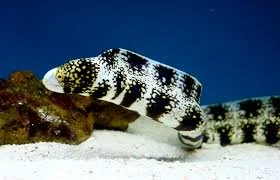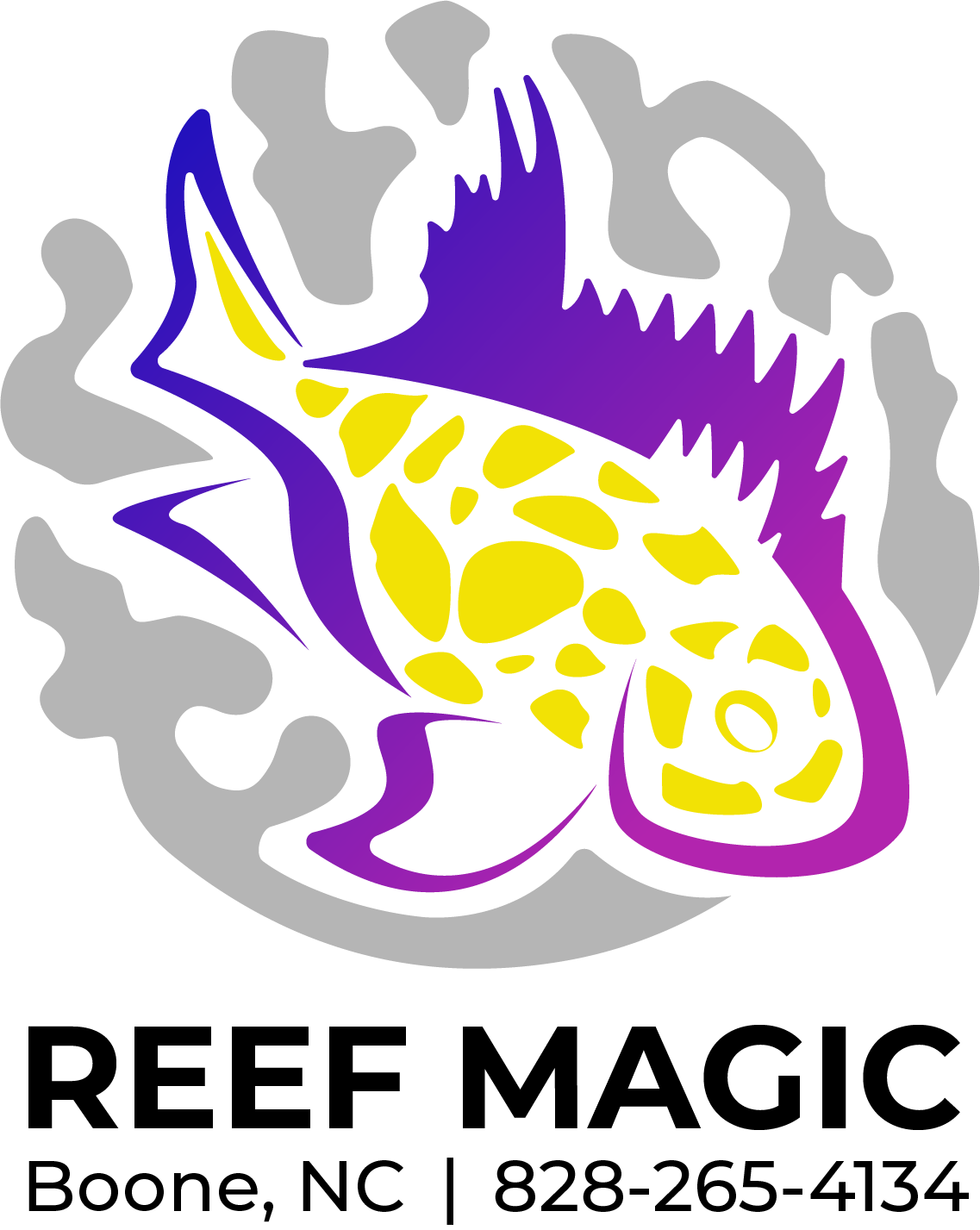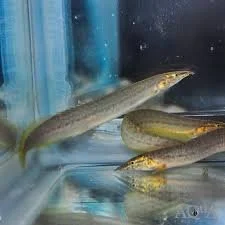 Image 1 of 1
Image 1 of 1


Eel- Snowflake XLarge
The snowflake eel is a saltwater fish with a distinctive speckled pattern of white, black, and yellow, giving it its name. It has a serpentine body, a blunt white snout, and two rows of jaws, with a second set in its throat to help swallow prey. This hardy, carnivorous eel inhabits the Indo-Pacific reefs and is semi-aggressive, but generally safe with larger fish, though it can prey on smaller tank mates and invertebrates like shrimp.
Appearance
Color and pattern: A light background of yellow, tan, and white is covered in black and yellow starburst or snowflake-like spots. The exact pattern varies between individuals.
Body: It has a long, serpentine body and a dorsal fin that runs the entire length of its body.
Head: The head is small relative to the body, with a blunt, white snout and two yellow, tubular nostrils.
Size: It can grow up to 39 inches in the wild, but typically reaches around 24 inches in captivity.
Skin: It is scale-less and coated in a protective mucus that helps with maneuverability.
Unique adaptations
Double jaws: Like other moray eels, it has a second set of jaws, called pharyngeal jaws, located in its throat. After catching prey with its front teeth, the pharyngeal jaws shoot forward to pull the food down into the esophagus.
Teeth: It has small, blunt teeth that are effective for crushing the shells of crustaceans and other prey.
Senses: Its eyesight is poor, but its sense of smell is highly developed to compensate.
The snowflake eel is a saltwater fish with a distinctive speckled pattern of white, black, and yellow, giving it its name. It has a serpentine body, a blunt white snout, and two rows of jaws, with a second set in its throat to help swallow prey. This hardy, carnivorous eel inhabits the Indo-Pacific reefs and is semi-aggressive, but generally safe with larger fish, though it can prey on smaller tank mates and invertebrates like shrimp.
Appearance
Color and pattern: A light background of yellow, tan, and white is covered in black and yellow starburst or snowflake-like spots. The exact pattern varies between individuals.
Body: It has a long, serpentine body and a dorsal fin that runs the entire length of its body.
Head: The head is small relative to the body, with a blunt, white snout and two yellow, tubular nostrils.
Size: It can grow up to 39 inches in the wild, but typically reaches around 24 inches in captivity.
Skin: It is scale-less and coated in a protective mucus that helps with maneuverability.
Unique adaptations
Double jaws: Like other moray eels, it has a second set of jaws, called pharyngeal jaws, located in its throat. After catching prey with its front teeth, the pharyngeal jaws shoot forward to pull the food down into the esophagus.
Teeth: It has small, blunt teeth that are effective for crushing the shells of crustaceans and other prey.
Senses: Its eyesight is poor, but its sense of smell is highly developed to compensate.






